Looking for unique experiences and detailed information for your trip to Hue? The ancient capital of Hue isn’t just a destination; it’s a vibrant journey where history, culture, and nature intertwine to create an enchanting masterpiece. Every step here is a discovery of a once-glorious imperial city.
This guide serves as your ultimate roadmap to planning a perfect Hue trip, exploring everything from iconic landmarks to peaceful hidden gems, from renowned local dishes to unique cultural activities. Let’s embark on a journey to conquer the heart of the legendary Hue!
I. Introduction to Hue – The Heritage Heart by the Perfume River
Gracefully situated by the romantic Perfume River, Hue proudly stands as the last imperial capital of the Nguyen Dynasty, and a UNESCO World Cultural Heritage site. Hue’s charm lies in the harmonious blend of its glorious past and contemporary life, attracting millions of tourists each year.
Visiting Hue means more than just admiring timeless architectural marvels; it’s about immersing yourself in a profound spiritual culture, savoring its quintessential cuisine, and discovering its picturesque natural beauty. Hue offers a slow-paced, romantic rhythm of life that distinctly sets it apart from other major cities, making every visit an unforgettable memory.
II. Top Iconic Attractions in Hue – Where History Comes Alive
When thinking about Hue tourism, you can’t miss the historical sites bearing the golden imprints of an era. These are the very heart and soul of the Ancient Capita
1. Hue Imperial City (Dai Noi)
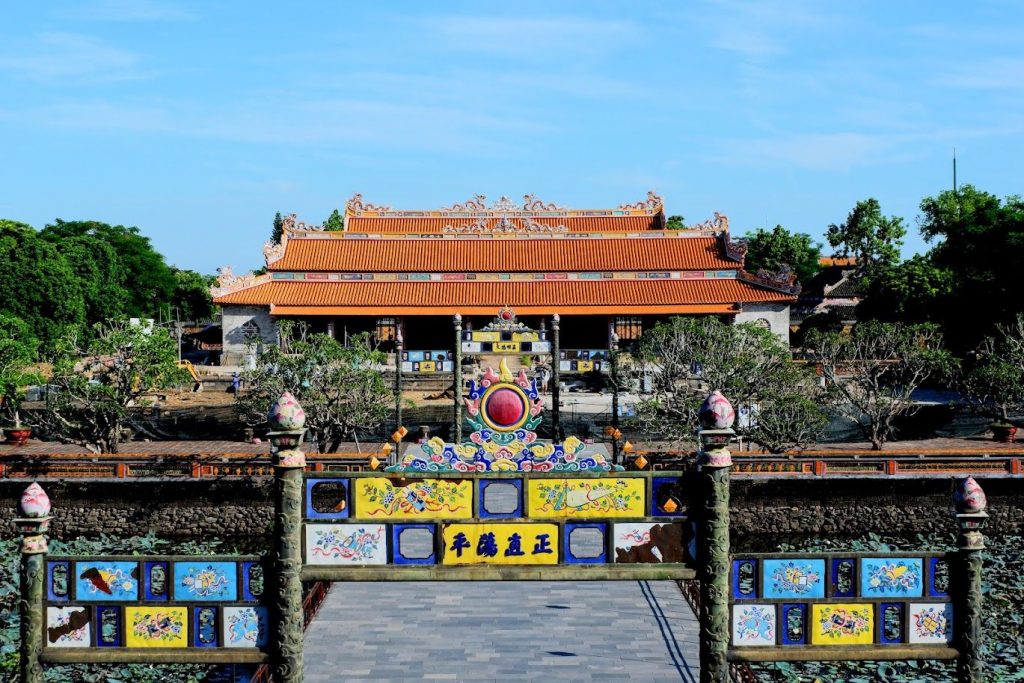
Description: The center of power for the Nguyen Dynasty for over 140 years, this complex of palaces and temples embodies the essence of Vietnamese imperial architecture and culture, recognized by UNESCO. You’ll be awestruck by Ngo Mon Gate, Thai Hoa Palace, the Forbidden Purple City, or The Mieu Temple Complex.
Address: 23 Thang 8 Street, Hue City.
Opening Hours: Daily, 7:00 AM – 5:30 PM.
Admission Fee: Approximately 200,000 VND/adult.
Recommended Visit Duration: At least half a day (about 3-4 hours).
Experience Tips:
- Go early in the morning or late in the afternoon to avoid crowds and the heat.
- Hire a tour guide or an audio guide device to delve deeper into the history and stories of each structure.
2. Thien Mu Pagoda
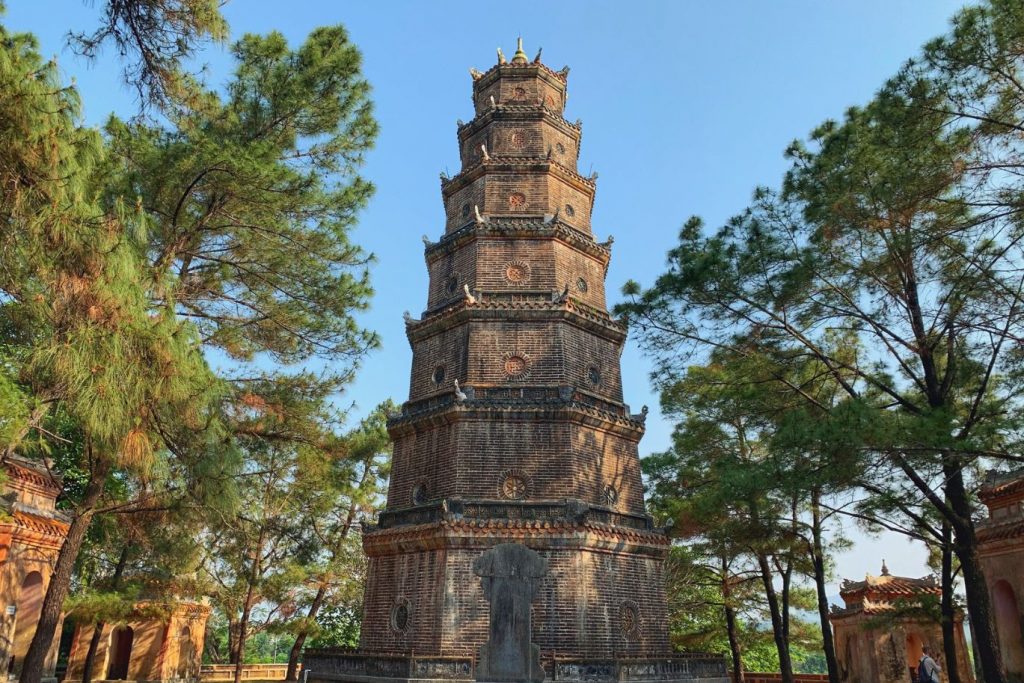
Description: The oldest pagoda in Hue and one of its most prominent spiritual symbols, casting its reflection upon the romantic Perfume River. It’s famous for its majestic Phuoc Duyen Tower and ancient architecture.
Address: Nguyen Phuc Nguyen Street, Hue City (about 5km from the city center).
Opening Hours: Daily, 8:00 AM – 6:00 PM.
Admission Fee: Free.
Recommended Visit Duration: 1-2 hours.
Experience Tips:
- Combine your pagoda visit with a Perfume River dragon boat trip for a panoramic and romantic view of the pagoda from the river.
3. Imperial Tombs of Nguyen Emperors
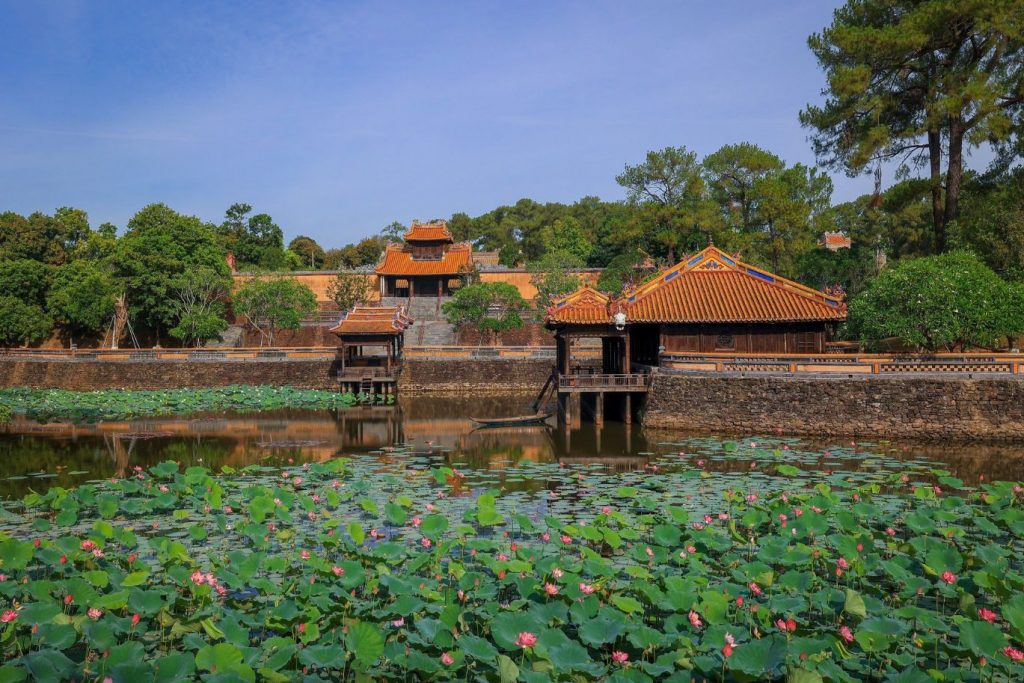
Description: Unique architectural masterpieces, each reflecting the personality and eternal life philosophies of individual Nguyen emperors. These are essential Hue attractions for understanding the history and art of the last feudal dynasty.
Notable Tombs:
- Tomb of Khai Dinh: Stands out with its exquisite blend of Asian and European architectural styles, featuring lavish mosaic work of ceramics and colored glass.
- Tomb of Tu Duc: Known for its poetic and ancient beauty, nestled in a peaceful valley with the Luu Khiem Lake and surrounding pine forests, closely associated with the life of the poet emperor.
- Tomb of Minh Mang: Features majestic architecture harmonizing with nature, symbolizing the strength of an enlightened emperor.
Opening Hours: Daily, 7:00 AM – 5:30 PM.
Admission Fee: Approximately 150,000 VND/adult/tomb. Combo tickets are available if you wish to visit multiple tombs.
Recommended Visit Duration: 1.5 – 2 hours/tomb.
Experience Tips:
- Choose 1-2 tombs that interest you most for a thorough exploration, rather than trying to visit all of them.
- Research the historical stories and architectural significance of each tomb beforehand to make your visit more engaging.
III. Hue Cuisine – The Imperial Flavors That Linger
Hue cuisine is more than just food; it’s an art form. Renowned for its sophistication and meticulous preparation, each Hue dish offers a distinct flavor that captivates every visitor
1. Must-Try Famous Dishes:
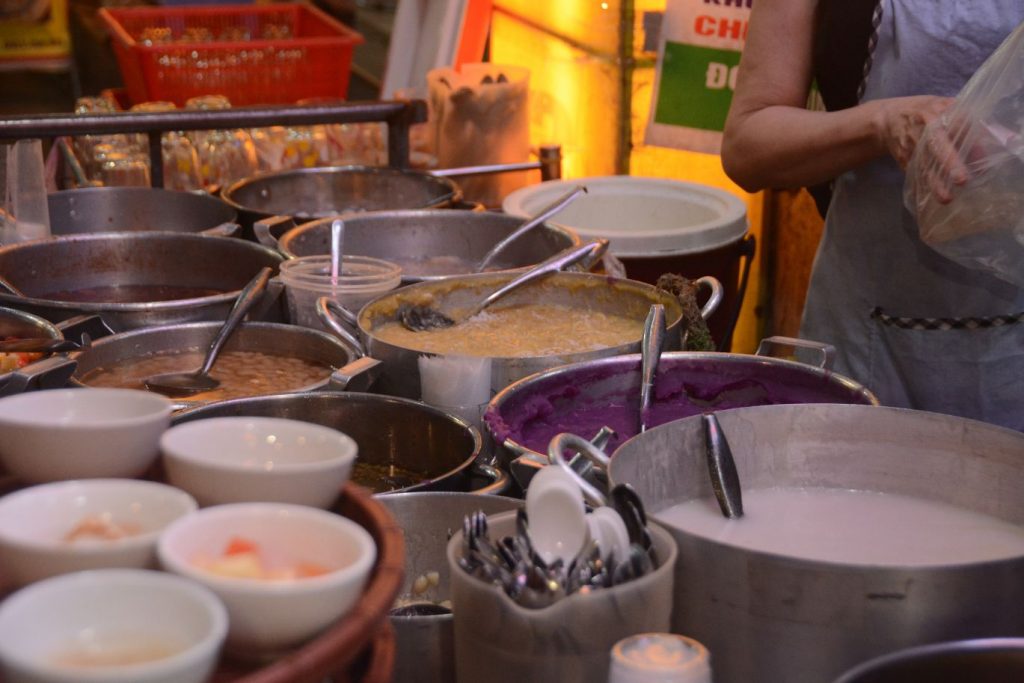
- Bun bo Hue (Hue Beef Noodle Soup): The iconic dish with its rich, lemongrass-infused broth, beef, pork hock, and a characteristic spicy kick.
- Hue cakes (Banh Hue): The delicate and unique trio of Banh Beo, Banh Nam, Banh Loc (steamed/wrapped tapioca dumplings); crispy Banh Khoai (savory pancake); and unusual Ram It (steamed sticky rice dumpling with fried shrimp).
- Nem Lui (Grilled Pork Skewers): Fragrant grilled pork wrapped with fresh herbs and a special peanut dipping sauce.
- Che Cung Dinh (Royal Sweet Soups): Dozens of sweet, elegant varieties, from lotus seed sweet soup to unique tapioca dumpling sweet soup with roasted pork.
- Com Hen/Bun Hen (Clam Rice/Noodle): A rustic yet captivating dish with spicy stir-fried clams and various crunchy toppings.
- Banh Ep (Pressed Cake): A popular snack with a thin, crispy shell, shrimp and pork filling, hot-pressed over charcoal.
2. Savoring Hue Cuisine Your Way:
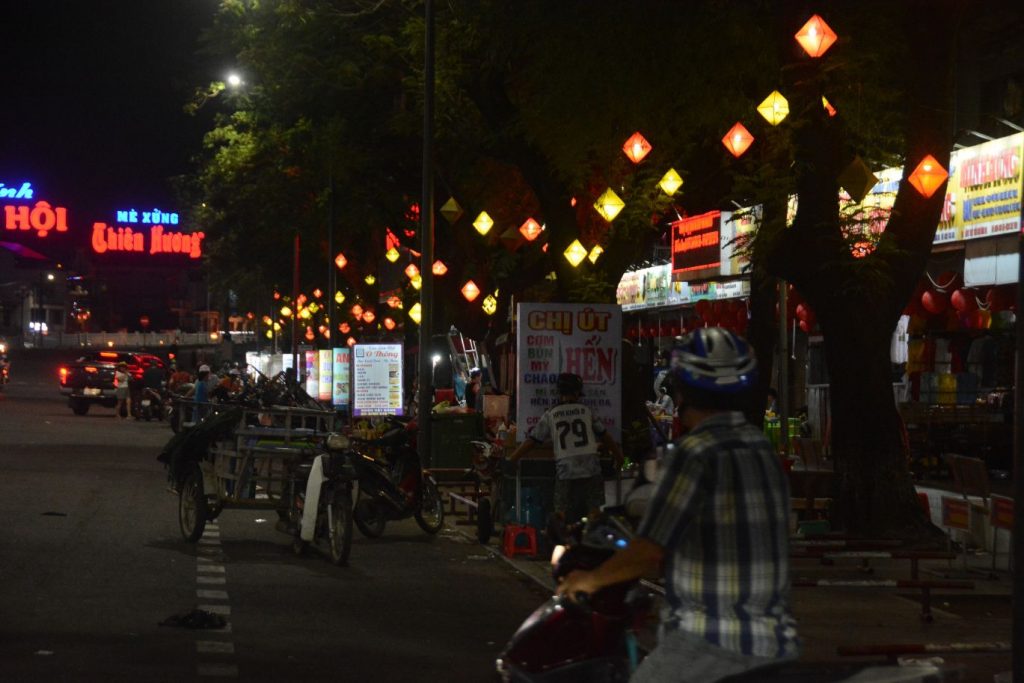
Explore Street Food Freely:
- Dong Ba Market and An Cuu Market are Hue’s street food heavens, where you can find all the delicious Hue dishes at affordable prices.
- Tip: Don’t hesitate to try every tempting snack you see and interact with friendly vendors to learn more about local culinary culture.
Deepen Your Culinary Experience with Tours & Special Activities:
- Join culinary tours or workshops to gain a deeper understanding of Hue’s food culture and history. You can meet artisans, make traditional Hue cakes, or learn to cook famous Hue dishes.
- Suggestion: Participate in a royal cuisine tour or a workshop to make traditional Hue cakes for an authentic experience.
IV. Nature Experiences & Outdoor Activities
Beyond its historical relics, Hue also boasts majestic and poetic natural beauty, ideal for those who love exploration and outdoor activities.
1. Bach Ma National Park
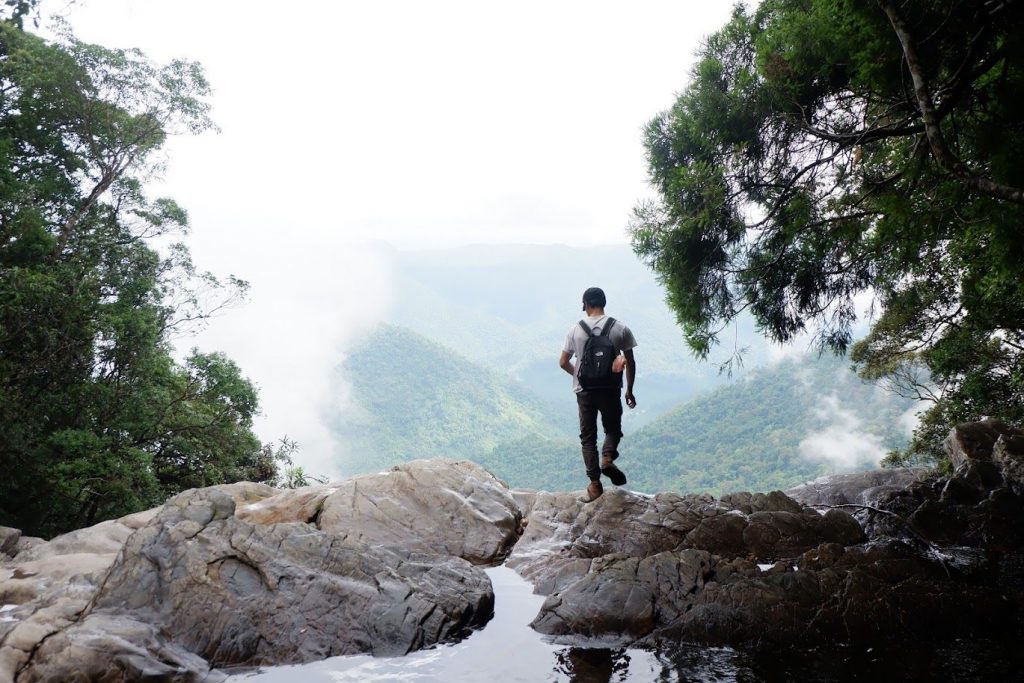
Description: An ideal destination for ecotourism and trekking, not far from Hue city center. It boasts a cool climate year-round and diverse ecosystems.
Highlights: Ngu Ho Bach Ma (Five Lakes), the majestic Do Quyen Waterfall (300m high), and Vong Hai Dai (a viewpoint offering panoramic views of Hai Van Pass and Tam Giang Lagoon).
Recommended Visit Duration: Full day.
2. Lang Co Beach
Description: Voted one of the world’s most beautiful bays, Lang Co Beach is a perfect spot for relaxation with its pristine white sands, crystal-clear turquoise waters, and swaying coconut trees.
Location: At the foot of Hai Van Pass, making it easy to combine with travel from Da Nang or Hoi An.
Experience Tip: Don’t forget to savor fresh Lang Co seafood at the beachfront restaurants.
3. Tam Giang Lagoon
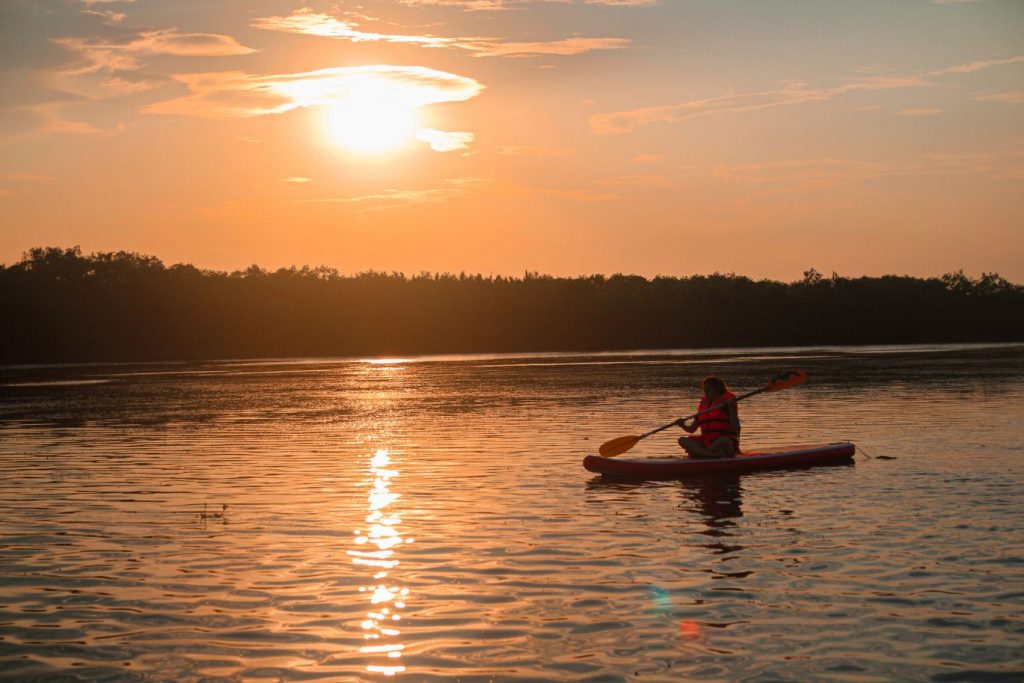
Description: The largest lagoon in Southeast Asia, offering a serene, ethereal beauty of local fishing life.
Highlight: Witnessing the sunset over Tam Giang Lagoon is an incredibly spectacular sight, painting the water with romantic, poetic hues.
Experience Tip: Rent a fisherman’s boat to cruise around the lagoon, try fishing, or enjoy fresh seafood right on the boat.
V. Suggested Itineraries & Frequently Asked Questions (FAQ) About Hue Travel
To help you plan your trip, here are some suggested Hue travel itineraries and answers to common questions.
1. Sample Itineraries:
* Hue in 1 Day: Focus on iconic sites like the Imperial City, Thien Mu Pagoda, and one of the representative tombs (Khai Dinh or Tu Duc). In the evening, conclude with a Hue folk song performance on the Perfume River or explore Hue night market.
* Hue in 2 Days: In addition to the above, you can add a traditional craft village (Thanh Tien paper flower village), or spend time exploring Tam Giang Lagoon/Bach Ma National Park if you love nature.
* For Families/Groups: Prioritize easily accessible sites (the Imperial City has electric carts) or gentle activities like boat trips on the river, and enjoying cuisine. Consider hiring a private car for convenience.
2. Frequently Asked Questions (FAQ):
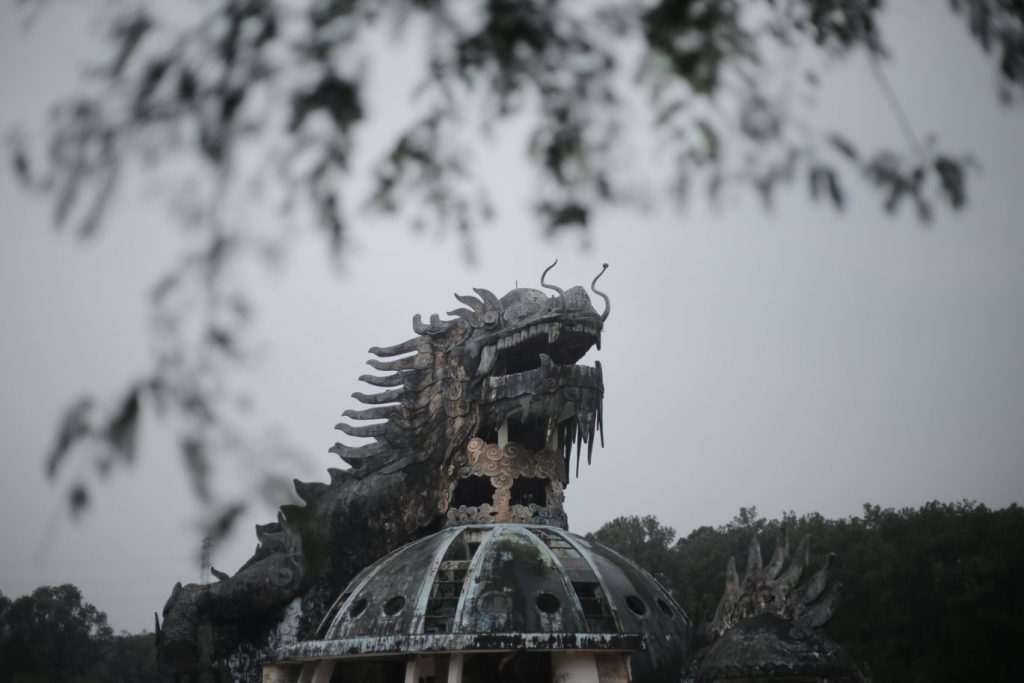
Q: Where are the best places to visit in Hue for 1-2 days?
A (1 Day): Imperial City, Thien Mu Pagoda, one royal tomb (Khai Dinh/Tu Duc), followed by a Hue folk song performance on the Perfume River or the night market.
A (2 Days): In addition to the above, you can add a craft village (Thanh Tien) or explore Tam Giang Lagoon/Bach Ma National Park if you enjoy nature.
Q: What is there to do in Hue at night?
A: You must experience Hue folk songs on the Perfume River, stroll through Hue Night Market and the walking street, savor street food, or relax at cafes/bars along the riverbank.
Q: What can I do in Hue when it rains?
A: A rainy Hue has its own unique beauty. You can visit the Hue Museum of Royal Antiquities to learn about history, enjoy traditional Hue cuisine at cozy restaurants or local markets, or join workshops for making conical hats/traditional incense for unique indoor cultural experiences.
Q: What makes Hue unique compared to other cities?
A: Hue stands out with its ancient, contemplative beauty, being the only place that still preserves an intact complex of Imperial City relics, along with sophisticated royal cuisine and profound spiritual culture. It offers a distinct, romantic, slow pace of life.
Q: Should I combine Hue with Da Nang – Hoi An?
A: Absolutely! These three destinations form a perfect travel triangle in Central Vietnam. You can easily travel between them by car, train, or motorbike via the majestic Hai Van Pass.
Q: Besides the main attractions, are there any other interesting unique activities in Hue?
A: Definitely! You can explore the abandoned Thuy Tien Water Park (a mysterious photo spot), participate in traditional craft workshops (Thanh Tien paper flowers, conical hats, incense), or seek out ancient cafes tucked away in alleys for a true local cultural experience.
VI. Conclusion: Plan Your Hue Trip Today!
From majestic palaces and mysterious royal tombs to the peaceful beauty of the Perfume River and ancient streets, Hue holds an irresistible charm. Its rich cuisine, deep-rooted traditional culture, and picturesque natural landscapes create a vibrant tapestry, making Hue an unmissable destination in Vietnam.
With this detailed guide, you now have all the information you need to explore Hue to the fullest. Whether you’re a history buff, cultural enthusiast, or simply seeking a peaceful retreat, a trip to the Ancient Capital of Hue will not disappoint.
Are you ready to write your own story in the Ancient Capital of Hue? Start planning your journey today!


